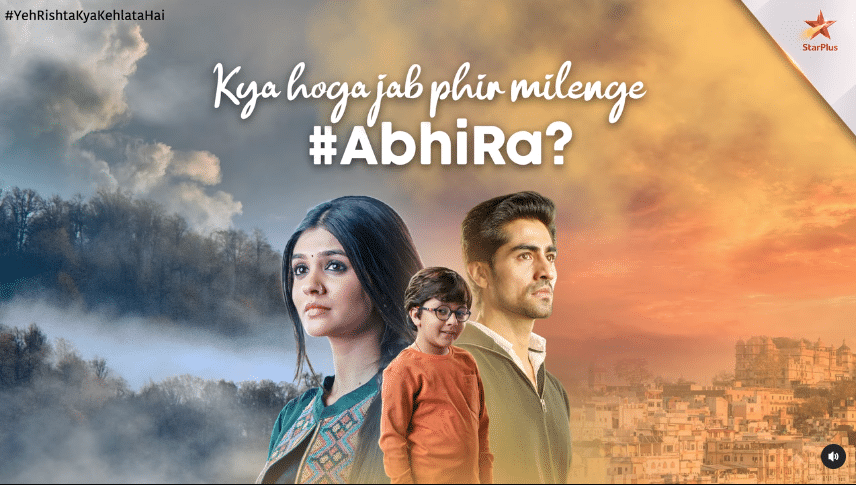The Lord of the Rings: The Rings of Power will change television forever
Much has been made of Amazon’s Jeff Bezos spending almost $1 billion on the first season alone. Should this adaptation of J.R.R. Tolkien’s work not become a water-cooler sensation, it’s unlikely any streamer will risk spending that much money on a single show ever again. But if it succeeds, then we’re potentially looking at a future where studios spend more and more, hoping to find their one show to rule them all.
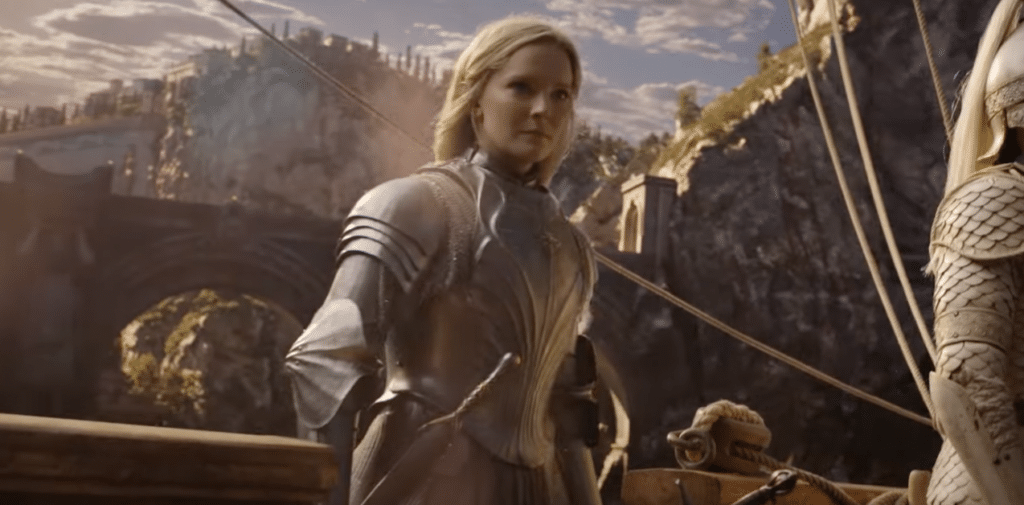
Every dollar Amazon has spent on The Rings of Power can be seen on screen in the opening two episodes. The word “epic” doesn’t do justice to the sheer scale of the story being told. We are initially taken back to the First Age of Middle-earth, when the Elves fought the great enemy Morgoth and his chief lieutenant, Sauron. A prologue retells the encounter, the montage of battles and tears harkening back to the opening of Peter Jackson’s adaptation of The Fellowship of the Ring.
While Bilbo, Frodo, Aragorn, and Gandalf are nowhere to be found, The Rings of Power shares the same kinetic cinematic language; sweeping shots of New Zealand landscapes, huge orchestral score, and living, breathing world.
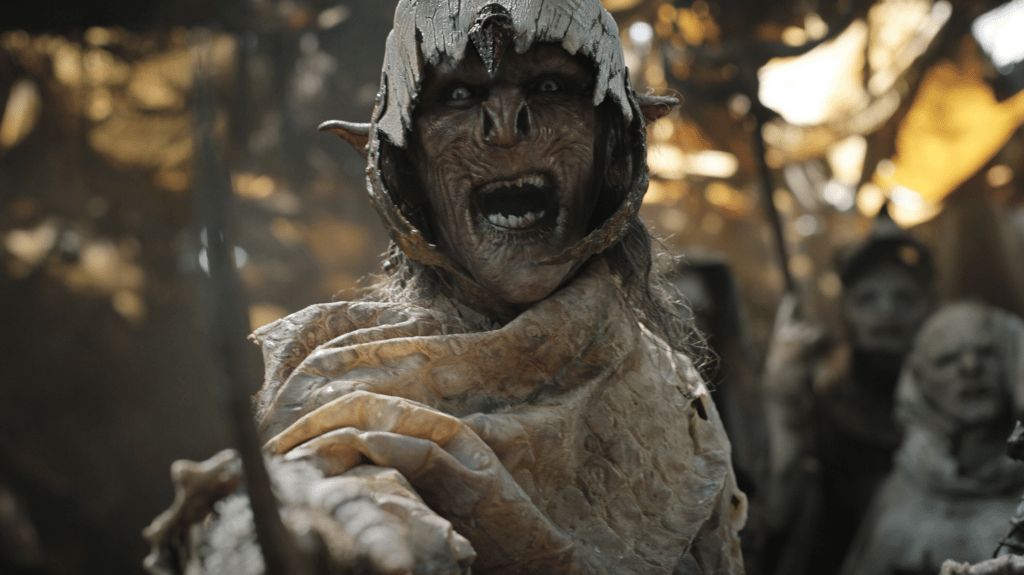
Morfydd Clark, previously best known for leading the horror Saint Maud, plays a young Galadriel, here a straight-talking Elven warrior – a different proposition to the more ethereal, threatening presence portrayed by Cate Blanchett in Jackson’s movies. Galadriel is ostensibly the series lead, the episodes taking her from hunting down Sauron in a distant land to the Elven kingdom of Lindon, and then beyond that. Her character goes through a minor arc that feels condensed and complete in the premiere, while the follow-up sets her up to be the series driving force behind the series.
That’s not the only story being told in these first chapters. We also meet the Harfoots, ancestors to the Hobbits who have that same knack for accidentally stumbling into trouble. Markella Kavenagh’s Nori is as troublesome and funny as either Merry or Pippin, while Lenny Henry’s mysterious soothsayer Sadoc Burrows adds intrigue to this whimsical tale that soon takes a more substantial turn as the Harfoots are drawn into the world of Big People. Showrunners Patrick McKay and J.D. Payne have invented these characters, and they are as Tolkien-esque, perhaps more so, than anyone Jackson created for his adaptations (especially when you consider how un-Tolkien Evangeline Lilly’s Elf was).
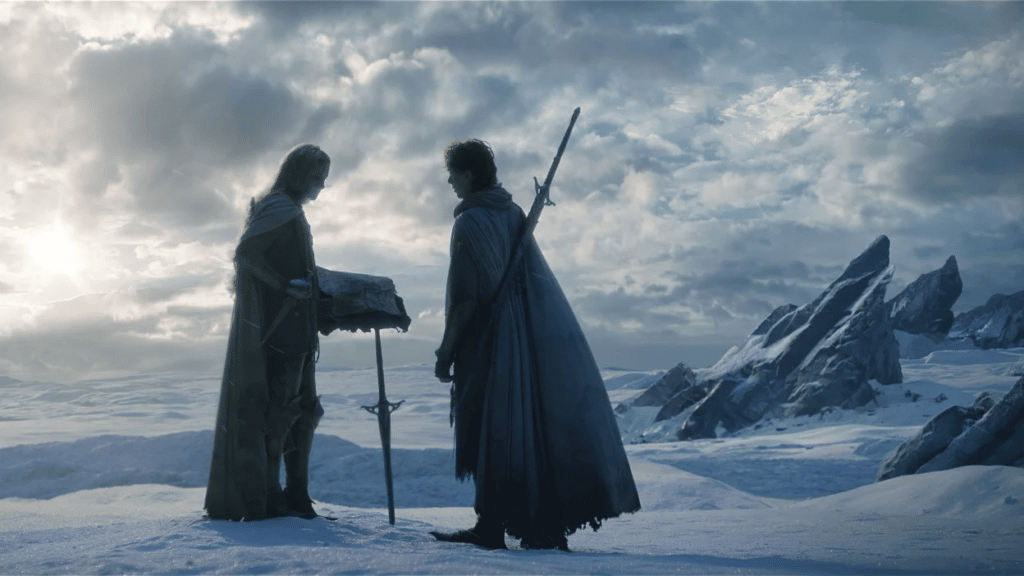
Ismael Cruz Córdova’s Elven guard Arondir and his human lover, Nazanin Boniad’s Bronwyn, have the same palpable Middle-earthian feel. Their romance echoes Aragorn and Arwen’s relationship, and Córdova’s stoic performance brilliantly sells his character’s age and sense of justice. The second episode introduces perhaps the best additions to the cast: Owain Arthur as Durin IV and Sophia Nomvete as Disa, two Dwarves with more sizzling chemistry than anyone else in Middle-earth. They are both comedic characters, similar to Gimli or the Dwarves in The Hobbit, but McKay and Payne take them seriously, and there’s trouble brewing in Khazad-dûm, a location we know will fall to ruin. They are introduced when Elrond visits the former mine – he’s another character from the movies, having previously been played by Hugo Weaving, now by Robert Aramayo. The newcomer does not try to imitate Weaving, though there’s that same aloofness in places, and has the potential to become one of the series’ best leads.
WATCH OUR REVIEW
That’s all to say there’s a lot going on in The Rings of Power. Where House of the Dragon, the Game of Thrones spin-off that everyone loves to pitch against the Lord of the Rings series, tells a more compact story about the reign of the Targaryens, Rings of Power reaches for more, these disparate stories sprawling the entirety of Middle-earth. The series resorts to showing a camera panning over Tolkien’s maps as we move from one location to the next, and without any previous knowledge of the author’s work, you will most likely be googling locations.
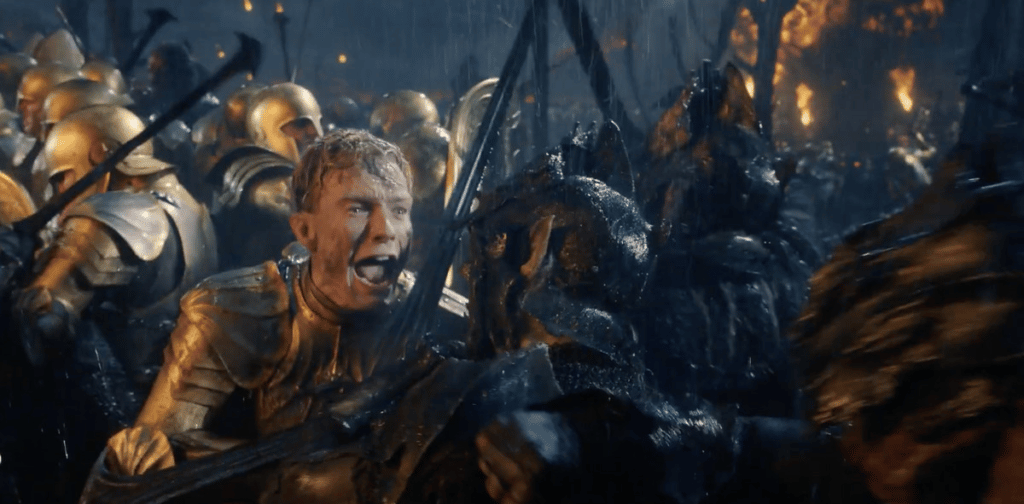
Every scene feels as dense as one from a movie – there’s barely a minute for the scripts to breathe as we cut from location to location. When The Rings of Power slows down and lets the characters just talk, it feels fresh. The Rings of Power goes deep into the lore of Middle-earth; where Elrond and Galadriel can have a catch up that’s not simply setting up the next adventure, but adding context that deepens the characters. During these moments, The Rings of Power luxuriates in actually being a television series, rather than a movie racing to the next set piece.



